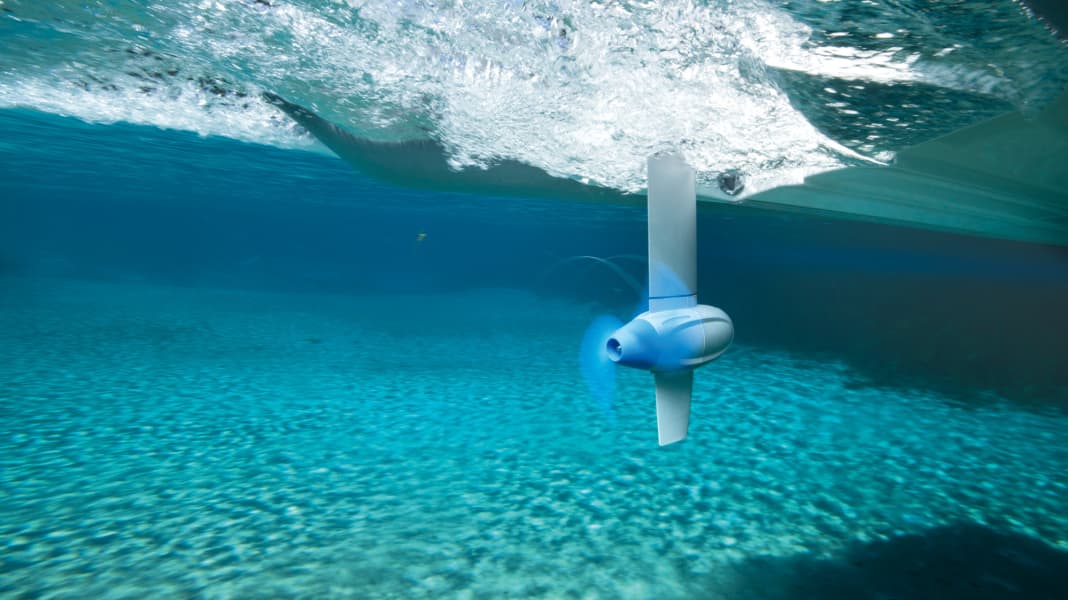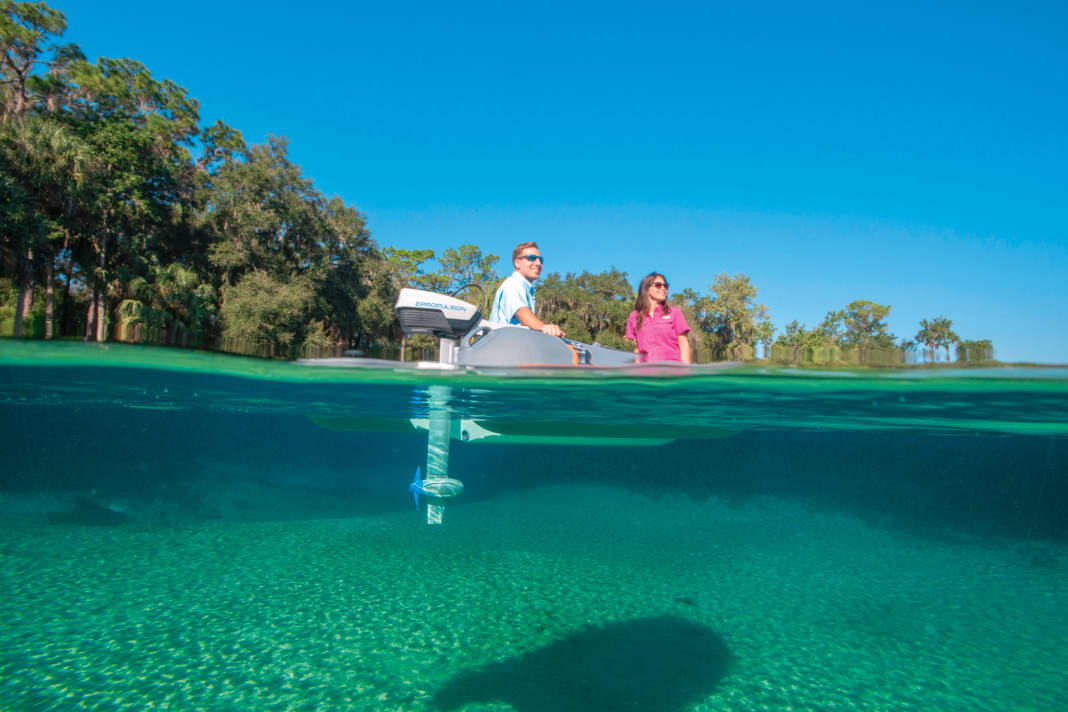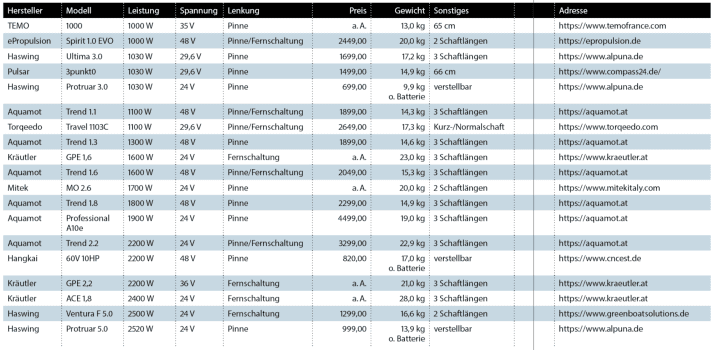
Since our last overview in 2017 a lot has happened since then. New technology, new suppliers and new models have led to a steady increase in the number of electric motors on offer. In the tables below, we show around 50 motors with more than 1000 watts of power. Smaller motors are hardly suitable as auxiliary or even main drives for motor or dinghies.
In the past, they were only found on small fishing boats or tenders, partly due to the low battery capacity, but today electric motors have also found their place as propulsion engines on larger boats. Electric inboard motors have been installed in various boats for several years now. Powerful outboards, on the other hand, have been in short supply until recently.
But what needs to be considered when switching from a combustion engine to an electric motor? To make it as easy as possible for the boat owner to switch to an electric motor, almost all models from 1000 watts are available with a tiller or remote control and in various shaft lengths. Exceptions to this are the large outboards from 15 kW, which are almost always only available with remote control.
The market for electric outboards is so diverse






Removable battery or fixed battery pack?
Even after several years of development, batteries are still a major topic in the entire field of electromobility. They have a significant influence on the range and performance of a motor. And not just because of their limited capacity, but also because of their own weight. Not all common battery types that we are familiar with from everyday life are suitable for boat operation. Various manufacturers therefore also offer suitable battery systems for their engines. Small outboards often use an exchangeable battery that is installed in the outboard itself. For more powerful engines, manufacturers rely on large battery packs inside the boat, as in the car sector.
The often short distances that can be travelled and long charging times, combined with a still sparsely developed charging network in Europe, put off many a potential e-skipper. However, this does not have to be the case, as electric motors, like their combustion engine counterparts, only become "power guzzlers" when a lot of power is demanded of them in the form of high speed or when a lot of weight has to be displaced. The same applies here: Travelling at speed works best in the efficient partial load range. All larger engines are equipped with appropriate displays so that the skipper can keep an eye on consumption and battery charge. If you like, an e-boat also has a consumption and fuel gauge.
Charging times for electric outboards
There are also low-voltage warning systems to prevent the vehicle from being left stranded. Because once the batteries are empty, it's time to "refuel". This is where a major disadvantage of all-electric boats becomes apparent - the charging time. On a boat with a combustion engine, it is relatively quick to fill the empty tank with new fuel. With an electric drive, it can take several hours before the batteries are fully charged again. Fast chargers are intended to provide a remedy. They can reduce the waiting time at the socket by a factor of five. The disadvantage of this technology is that it reduces the service life of the batteries. In addition, not all power grids at the harbour jetties are sufficiently dimensioned.
For the majority of small motors, however, a good charger, which is also used for motor vehicles, is sufficient. Our tip: It is better to allow for sufficient safety reserves when calculating the power. Always travelling at the upper power limit requires a lot of energy, which drains the battery quickly, and you may not be able to cope with the current on flowing waters.
The electric outboard motor is no longer just an auxiliary motor. With outputs of up to 140 kW, it is no wonder that electric outboards are on the rise. Many suppliers offer a wide range of power ratings. Our overview is intended to help you choose the right motor and provide a price guide.
Electric outboard motors from 1000 watts
(click to enlarge, best viewed in landscape format on mobile devices)





